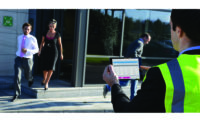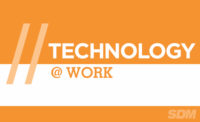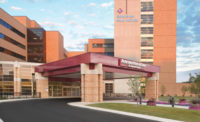If anyone understands managed services, it’s an IT services company.
Even so, when IT services provider Internap Network Services Corp. faced the unenviable task of quickly relocating 200 employees from downtown Atlanta to new suburban headquarters, using managed security services to streamline the move wasn’t originally considered. After all, most corporations consider security an operating expense. It turns out, though, that it can also be a business tool that makes operations easier.
And Internap’s use of the technology is a prime example — a managed services approach helped complete the office move on schedule, allowing an electronic access control system to be installed in three weeks on 20 doors, and access cards re-created for 200 employees.
“Without the security system in place, the new office space could not have opened,” said Laura Miller, director of IT services and infrastructure at Internap.
Since 1996, thousands of companies have entrusted Internap to deliver their online applications including managed hosting, cloud and hybrid service. Considering the ever-growing importance of enterprise data, it goes without saying that having rock-solid security measures is a top priority for any IT services provider.
“As a global provider of IT hosting services, we have to make certain that all of our facilities meet the highest security standards,” Miller said. “Our customers entrust us to keep their data protected. Electronic access control allows us to prevent unauthorized access by contractors, visitors or employees to data-sensitive areas.”
In Internap’s case, maintaining that trust meant the company had exactly four months to complete. That meant upgrading the new facility, designing the access control system, updating employees’ credentials, and physically moving everyone into the new building.
It was a daunting task for Internap’s IT team of four employees responsible for maintaining the company’s local IT systems. That’s a full-time responsibility itself. But they were also tasked with installing the IT infrastructure in the new space. This left the team scrambling to configure both systems.
Recognizing the enormity of the project, Miller determined the best option was to find a security integrator that could play an engaged role in the planning process, and recommend the most appropriate solution. During her evaluation of security vendors, Miller requested a proposal from Atlanta-based Remote Protection Systems, which recommended managed access control.
“This was the first time we had been approached with a managed access control solution,” said Miller. “As an IT hosted services firm we understood the managed model, but it was not something we had thought about for our access control system.”
Managed services have gained traction over the last few years for their ability to simplify operations for both security companies and end users alike. The software enables services such as allowing dealers and integrators to respond to requests for adding and deleting access cards; create customized reports on an hourly, daily, weekly or monthly basis; and receive detailed reports via email and Web-enabled devices. The server can be managed at the security company’s or integrator’s facility via a secured encrypted network line, which means no onsite server is needed at the customer location.
This technology seemed a sensible way to reduce the system’s footprint at the new facility, cut down on installation times, and reduce training time for employees who managed the system on their end.
Before recommending managed access control, Remote Protection Systems sat down with the company to learn how they managed their previous system.
“From the meeting we learned that Internap had a single employee whose outlying responsibility was to manage the system,” said Scott Hightower, president of Remote Protection Systems. “There is a fair amount of inefficiency in managing the system this way. It places an extra burden on the employee to be available whenever an update needs to be made to the system. Plus, if the person goes on vacation or decides to leave the company, Internap is left with no one to update the system.”
Taking what it learned about how Internap managed its access control system and estimating the timeline to implement a non-hosted system, Remote Protection Systems determined a managed approach was best.
“Managed access control is faster to install and configure than a non-hosted access control system,” Hightower said. “With a non-hosted system, we have to configure the access control server at the company’s facility, install the door readers, and train employees how to maintain the system. With managed access control, we only have to install the door readers and add employees’ credentials in to the system. The access control server is preconfigured and ready to go at our facility.”
For Internap’s Atlanta IT team, the decision to go with managed access control was an easy one. A main reason is that Remote Protection Systems conducts all access card adds and removals, opens and locks doors, pulls reports, maintains the system, and hosts the server and software.
“With having to juggle our daily responsibilities with configuring the IT infrastructure at the new facility, I recognized early on that my team did not have the capacity to configure the system,” Miller said. “By outsourcing the configuration and management of our access control system, we were able to stay focused on our core responsibilities.”
Internap and Remote Protection Systems held weekly construction meetings to optimize the layout of the access control system within the facility.
“We put a lot of emphasis on evaluating how they would move through the space to make sure the design of the office space worked efficiently for our employees,” Miller said. “With 200 employees coming to the office daily, the space had to accommodate the movement of employees with general access and those with access to restricted areas.”
The two companies ensured that all employees with general access could enter other areas of the building.
“We didn’t want to reduce productivity or morale by preventing employees from walking between or around floors,” Miller said. “Only two areas within the facility needed to have restricted access: the network operations center and the engineering lab.”
Having Remote Protection Systems at the construction meetings allowed the security company to make recommendations on the type of doors needed to support specific electronic locks.
“When designing a new facility like Internap’s, it’s important to involve a security company early in the design phase,” Hightower said. “Many times builders don’t know what types of doors are needed to support the variety of electronic locks. This can create a very expensive problem later on if it’s not addressed in the design phase.”
It took Remote Protection Systems three weeks to install and configure the system and install 150,000 feet of Honeywell’s Genesis low-voltage cable to 1,000 connection points.
The whole project, completed on-time, took three months, allowing a quick transition to the new facility.
Internap’s use of remote-managed services illustrates how security technology can impact business operations when it is transformed from a hardware- to a services-based solution. And as more businesses look for ways to save costs and gain operational efficiencies during uncertain economic times, more services-based sales opportunities are expected to surface. Positioning security as a business tool in its own right has become the new reality.







